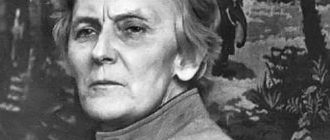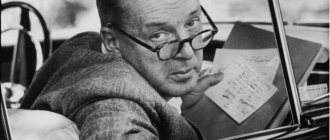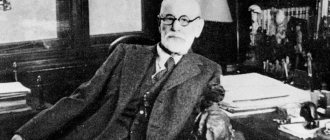Inspiration is the emergence of motivation, readiness for any action, the most important aspect of an individual’s creative potential, marked by a high rise and concentration of internal forces. At the moment of inspiration, all mental processes are activated, new internal possibilities are revealed. Every individual needs inspiration, regardless of his profession and type of activity. It’s worth taking on any task with all your heart, whether it’s doing important scientific work or self-development, ordinary cooking or everyday cleaning of your home; as a result, the results often exceed even your own expectations.
What is inspiration: definition of the concept
Inspiration is a special state of consciousness, characterized by high productivity, concentration, emotional and energetic uplift.
Sometimes it is also called resource state or flow state. Being in it, a person is able to create things that in his normal state he would never even dream of. His mental processes are activated, reserve sources of internal resources are revealed - and all this “artillery” is directed towards solving the current task.
Contrary to popular belief, flow states are not limited to creative people. Of course, it comes less often to a worker of monotonous, monotonous work than to a representative of the creative intelligentsia. But this does not mean that the worker is completely deprived of it.
In moments of inspiration, a person may feel as if he has established a connection with some unknown source of power and knowledge. Many even associate it with religious feelings. Inspiration is always experienced as an internal impulse to action and is aimed at transforming the world around.
Why do we need inspiration?
“Inspiration is like spice, you need very little of it, but it can change everything.”
Pablo Picasso .
It is generally accepted that inspiration is inherent only to creative people and is necessary for artists, poets, and musicians. And in everyday life you can do without it. It is also generally accepted that inspiration is something elusive and unpredictable, capricious and uncontrollable.
In fact, these are just stereotypes. In fact, inspiration can come from any activity. It is inspiration that turns what you do into a creative process. You can creatively wash floors, bake pies with inspiration, and paint mediocre pictures without any enthusiasm.
There are at least 9 reasons why each of us needs inspiration in everyday life.
- Inspiration is the ability to be yourself.
- Inspiration is the ability to play.
- Inspiration is an experience of flow.
- Inspiration is a conscious choice and overcoming.
- Inspiration is a factor in personal success.
- Inspiration is about connecting with other people.
- Inspiration is a leadership skill.
- Inspiration is mathematics.
- Inspiration is personal transformation.
Inspiration - the ability to be yourself
The etymological meaning of the word inspiration is in one breath, in one breath.
Inspiration is a connection with your Soul, feeling your destiny and following it .
And in fact, the ability to be in agreement with yourself, in harmony, is very important.
After all, when we are at odds with ourselves, it affects all areas of life. Conflicts with loved ones happen more often, good mood and drive are less likely, everything falls out of hand at work, and you don’t want to maintain contact with other people.
But when we experience inspiration, uplift, inspiration, it seems that everything is within our reach, the whole world is open at a glance, nothing is impossible. Ideas and solutions come, we radiate with the energy of happiness and become little centers of attraction for other people.
It is in such moments that we experience a feeling of connectedness with the whole world. In this state it is impossible to feel loneliness or depression, despair and helplessness. When you are connected to everything alive in the world, consciousness expands. Everything becomes accessible—every dream becomes achievable.
But what to do if inspiration doesn't come? If there is no favorite thing that turns on this inner light and turns work into pleasure? If creativity seems something distant?
Although it may seem strange at first glance, imitating what we like and admire can lead us to ourselves, as happened with Yohji Yamamoto, the world famous fashion designer. By copying your favorite silhouettes and colors, immersing yourself in the history of your country, you can create a unique designer clothing style.
You can imagine yourself as someone who inspires admiration in the professional field. It is enough to imagine yourself as this person. Try to get used to his image, his style, his thoughts and feelings - as much as you can. And then you will be able to act, make decisions, come up with ideas or do something as if you were him...
You can immerse yourself in your favorite area of knowledge or activity and bring something from there for a new area. Looking at the swirling leaves in the autumn park, you can come up with a unique pattern for fabric or the shape of a candlestick. Just like when you come into contact with the image of a chosen person, you can try to find new ideas, as if he were doing it.
- Exercise 1.
Think about what inspires you? First snow in the light of lanterns? Walking along a sandy beach?
Think about who inspires you? What do you know about this person? Introduce yourself to them.
Think about how something that inspires you could be translated into another field?
Think about what ideas the person you choose would come up with.
Remember: even if you imagine yourself as Pablo Picasso, you will draw on the canvas yourself...
Inspiration - the ability to play
It is well known that children experience a flight of inspiration, joy, and delight much more often than adults. As children, we often fantasize and dream. Imagination paints the world with wonderful colors. As children, we don’t yet know that “this doesn’t happen.” Anything can happen in childhood.
And “everything happens” for inventors, innovators, artists, writers and musicians. They also don’t know the word impossible. That is why they see those sides of the world that are inaccessible to others. And they can bring into reality what did not exist before them.
Someone once came up with the first button, the first coffee maker, a steam locomotive, a telephone and stickers for the office. How do they do it? The secret is simple. They retain the perception of a five-year-old child.
Curiosity + Play + Emotions + Openness to new things = Inspiration
At five years old, a child explores the world with curiosity and gets to know it. He is open to everything new. There are no strict frameworks for him yet: “This is so and only so.” For him, the more relevant question is: “How is this?”
At this age, children ask a lot of questions... This interest in everything in the world allows them to deal with information in a completely different way. If in adults it is filtered by attitudes, beliefs and stereotypes - everything that does not pass censorship is simply not perceived or discarded, then in a child new information becomes part of a holistic view.
In childhood, everything becomes part of one big game. And at the same time, it challenges. The child strives to find out the limits of his abilities - from tying shoelaces to building models of spaceships. “Can I do this?” - this question creates personal personal progress.
And, of course, the child allows himself to experience the whole gamut of feelings. He does not yet understand that feelings must be hidden, suppressed, that this is not accepted. He doesn't know how to wear a mask. But in adults, the mask sometimes grows so tightly to the face that people forget who they really are.
“As you pass from the tender years of youth to the cruel and embittered maturity, do not forget to take with you all human feelings! Don’t leave them on the road because you won’t pick them up later!”
N. Gogol.
When we grow up, the child remains inside us. It is important for adults to sometimes give free rein to their Inner Child and look at the world through his eyes. Turn off the rational mind and turn on the heart, let yourself feel, come into contact with a living and warm pulsating life.
“To be in touch with yourself, you need to be happy. Joy is a primary feeling.
You have to allow your inner child to be here and now.”
Stephen Covey.
Adults who keep turning any work or activity into a game are always full of joy and inspiration. After all, the game is alive. She transforms. It's new every time. The game makes life unforgettable and bright. As in childhood.
Inspiration - flow
They say that inspiration is a way to live outside your head. And this very accurately reflects the experience of flow. This is immersion in action, dissolution in it so much that the conscious Self, our eternal controller, our Ego, simply turns off. But this does not mean that we become less aware, less capable, or less intelligent. Against. We connect with our resource part, with our Wise Self. And solutions are found easily and quickly, new ideas come, insights occur.
“I feel the energy flowing through me, and I just don’t interfere with it.”
Poet Richard Jones.
Mihaly Csikszentmihalyi, a famous researcher, psychologist and professor at the University of Chicago, who has devoted his entire life to the study of happiness and creativity, identifies 7 conditions for the emergence of a flow state in any type of activity.
- Clarity of purpose (what tasks need to be solved and in what sequence they should be completed).
- Online feedback on how you are doing (it is important to know at all times how well you are doing).
- Balance between capabilities and abilities (it is important to understand that the task is feasible and challenging).
- Concentration of attention (...as if the boundaries between personality and activity are blurring...).
- Here and now.
- Everything is under control (the ability to make events develop clearly in accordance with intention).
- Loss of self (switching off rational consciousness and Ego).
In a state of flow, our sense of time adjusts to what we are doing. Many people report losing their sense of time—it either stretches or contracts as hours fly by like minutes. A person is in the flow and becomes an action himself. And all seven basic conditions are quite achievable in any type of activity. This means that we are able to experience inspiration both while climbing a hard-to-reach mountain range and by re-pasting the wallpaper in our apartment with our own hands.
Inspiration is a conscious choice and overcoming
Quite often, the impressions of climbers, dancers and musicians are cited as examples of unforgettable streaming experiences of happiness and inspiration. However, they all say that before inspiration and exciting happiness they have to overcome themselves, make efforts and work hard. Inspiration is a consequence of intense activity, not the other way around.
“Yes, there is inspiration, but it must find you at work. Don't waste a lot of time waiting for the “right” moment. If inspiration strikes, great, create! But don't limit yourself to just how long this magic ingredient lasts. Sometimes you need to force yourself to do work that does not require special skills, and it is foolish to expect such support for this.”
Pablo Picasso.
Reinhold Messner is an Italian mountaineer and explorer. He is currently recognized as the most famous mountaineer in world history. Messer became famous for his high-speed ascents of Everest and other world peaks without additional oxygen or route preparation (in the so-called alpine style). He became the first climber to conquer all 14 peaks of 8,000 meters or more. Messner was one of the first to climb all 7 of the highest mountains in the world, and also crossed Antarctica on foot.
In the book “Crystal Horizon” he describes the ascent. And quite often the theme of fear and overcoming is heard on the pages - “I exist only as overcoming myself.”
He writes that at the start there is always the first volitional effort, the first push to start. First - overcoming yourself, your fears, limitations, your “I can’t”. Then - action. And only then - inspiration, flow, pleasure.
Why do I choose inspiration?
Becauze I whant so!
- Exercise “Setting up an inspired day.”
You are what you think about. Be your own inspiration!
Write down how you feel at the beginning and end of the day - as usual.
Write how you want to feel at the beginning and end of the day?
As usual - inspiring
Now let's see what simple actions you can take to help move from one state to another.
- What can inspire you in the morning and cheer you up?
- Who can be your inspiration?
- What can you do to experience joy and upliftment?
- Who can you discuss details of your day or work with that will inspire you to discuss?
- What results of the day in the evening will make you satisfied and proud?
Something else?
Inspiration is a factor of personal success
From our school years we were taught to overcome our weaknesses. And we always mainly focused on them and put in a huge amount of effort in order to be able to do what was most difficult for us. We did not become the best at this; our efforts did not always bring the expected results. But that’s how it was accepted.
“When we look at each other through the lens of weaknesses, we make people's strengths useless and weaknesses obvious.”
Stephen Covey.
Modern research shows that successful people do not strive to overcome shortcomings; on the contrary, they make efforts to develop abilities. And it is precisely what they are talented at that brings the greatest success.
Talent is a way to express oneself through activity, to show the world what a person is predisposed to. As a rule, we achieve the greatest success in what we love because we are able to do it as well as possible. Much better than others.
“There comes a time in every person’s life when he needs to express himself to the end, to reach the limit of his capabilities. Those who were born to paint will not be themselves until they take up a brush and paints. Another always sees figures made of wood, stone or metal, and his hands itch to create them. A third must sing at all costs, while others strive to captivate listeners with their speeches and control their mood. Everyone has an inner attraction that needs to come out. At the same time, a very high standard is gradually developed in a person - the highest that is possible for him, and he strives to test himself with this highest test. He will not reach agreement either with himself or with the world around him if he does not rise to the height that seems to him to be the limit.”
R. Messner.
- Exercise “Success and Pride.”
- What success do you remember that makes you feel proud?
- What helped you achieve success?
- What internal qualities and abilities of yours helped you achieve success?
Agree that, remembering your success now, you experience pleasure, perhaps slight euphoria. And on this wave of positive feelings, new inspiration is born.
This is how you can stimulate new success. After all, what we do well, what we do with pleasure, brings the greatest joy.
Inspiration is connection with other people
Inspiration connects us with other people. When we are passionate about something sincerely, from the heart, when we are in the flow, there is a lot of hot living energy inside us, and it infects everyone around us. Builders sometimes say that in order for a house to be strong and reliable, “...the main thing is not the stones, the main thing is the mortar...”.
Inspiration creates connections between people. It can become such a solution. After all, when we share our joy generously and unselfishly, people are drawn to us. Then we become the center of attraction. And you yourself know such people in life. And they inspire you.
Joy, inspiration, and willingness to help create integrity and connections between people. And there is another aspect of inspiration that connects people.
Albert Schweitzer, theologian, musician, Nobel Peace Prize laureate wrote: “In everyone’s life, at a certain moment, the inner fire goes out. And then, when meeting another person, a flame breaks out. We should all be grateful to those people who rekindle the inner spirit.”
The mathematics of inspiration
No matter how common it is to think that inspiration is a spontaneous flight of imagination, it has its own formula with which you can call inspiration at the right moment.
- Inspiration = Challenge + Interest + Focus.
Modern research shows that we experience inspiration when a job or activity challenges our abilities, arouses interest, and we are able to immerse ourselves in the activity with extreme concentration.
When all three components are present, inspiration will definitely come. And in practice, using this formula, you can learn to evoke inspiration even in the most routine and boring work.
Let interest fill you completely. Just like it happens in childhood, when we were captivated by some kind of game or could spend hours watching a ladybug crawl along the peeling plaster of an old house. Interest comes gradually, through the process of concentration. And it can increase and multiply when you open, when you are curious, when you observe.
There is such a thing as focused relaxation. In this state we do everything in the best possible way. The body is relaxed, and most importantly, the mind is relaxed. This allows inspiration, creative therefore, to turn on all conscious and unconscious parts of the Self. This allows you to become holistic.
In addition, all four basic arithmetic operations can be associated with inspiration.
Subtraction: leaving only the main thing, putting everything else out of brackets - this is the utmost concentration of attention.
Addition: You need to add up your abilities, talents, skills and qualities to meet a challenge and achieve a goal.
Multiplication: It is important to multiply your interest in what you are doing.
As a result, inspiration will come. And when the rational mind turns off, not only insights, ideas, excellent work will come, but also joy. A lot of positive energy that can be shared with the whole world - and with those people who are nearby.
Sharing: inspiration can be shared with the whole world! Inspiration is contagious. And the more you share your inspiration with others, the more inspired you become.
There is a simple algorithm for inspiration.
Define a goal, task or project. What are you going to do.
Make a map of success - remember what qualities, abilities and skills you can rely on in a new business.
Sell yourself a goal: find 4 values and meanings that are important to you personally.
Challenge yourself: what do you want to achieve? Where is your limit? Are you capable of this?
When you achieve your goal, what will change in the world around you, to whom and what benefit will it bring?
Inspiration is not thinking. Inspiration is doing.
Inspiration is inner transformation _
Inspiration allows you to discover the best in yourself, which means going from dream to dream. And every new success becomes a point of growth. Inspiration triggers the process of internal transformation, and we move along a spiral of development.
“Inspiration is the “fire” that makes any work hot and “alive.”
Inspiration is like love. Everyone participates in this voluntarily!”
Yana Frank.
The importance of inspiration for life and creativity
All great works of art and scientific discoveries were made in a resourceful state. Its role in our lives is difficult to overestimate. Inspiration is a universal assistant with which you can achieve incredible results in anything.
Being at its peak, we feel harmony between the inner and outer world, the unity and integrity of our “I”. Therefore, it is not only a means of realizing creative, professional and everyday plans, but also a kind of reward for the work already done.
Remember how you enter a state of flow. This is usually preceded by long, fruitful work. When some of the work has already been done and enough information has been collected, inspiration comes in to help us. Therefore, you should not wait for it at the very start.
It has been proven that a state of inspiration improves the functioning of all cognitive functions: perception, attention, memory, thinking. Therefore, the more often you stay in it, the better it affects the brain.
Meaning in human life
For any person who strives to find his niche in this world, regardless of what talents he is endowed with, inspiration is necessary to achieve his most cherished desires and goals. Without this inner uplift, a person gradually fades away, never demonstrating his talents. There are no people who have no abilities or gifts at all. The main thing is to understand what you are particularly gifted in and develop these inclinations. It is impossible not to notice an inspired person in a crowd; he is like a light illuminating his path with joy and happiness. When inspiration comes into a boring, dreary life, the world seems to be filled with divine light from within. The significance of this phenomenon in society and a person’s personal life is extremely important, as it contributes to the development of talents and their implementation, and this is progress in technology, science, literature and other spheres of society.
Neurobiological basis of inspiration
Since ancient times, people have tried to explain the origin of inspiration in order to try to control it. Our ancestors considered this condition to be the result of the influence of higher forces. This is reflected in the name itself. “Inspiration” comes from the word “to inhale,” that is, to invest.
The gods put a piece of themselves into a person, and he gains enormous creative power. Therefore, the creators of the past often turned their prayers to the gods.
Modern research has proven the connection between inspiration and the level of the hormone dopamine. Dopamine is a neurotransmitter produced by endocrine cells in the brain. It causes euphoria, a feeling of pleasure, a surge of strength and motivation, and a desire to create. All known drugs act on dopamine receptors.
In a state of flow, dopamine is released into the brain, which, among other things, inhibits the processes of latent inhibition and expands the associative horizon.
Interesting cases of the effects of dopamine on the brain have been described in medicine. Patients with Parkinson's disease were prescribed drugs that increase dopamine levels. After this, they began to create compulsively. So one woman completely painted her apartment, not even sparing her washing machine. After adjusting the dose of the drug, all patients got rid of obsessive creativity and returned to normal life.
Main signs of inspiration
Inspiration is difficult to confuse with any other state. It is so original and bright. Let's look at its main psychological and physiological manifestations.
- increased performance;
- emotional upsurge up to a feeling of delight;
- maximum concentration of attention on business;
- improving the quality of all cognitive functions;
- feeling of dissociation with one's own body (not always).
One composer described his inspiration this way:
“You become ecstatic and feel as if you cease to exist. I've experienced this many times. I looked at my hand, and it seemed to me that it lived its own life independent of me. And I just sat stunned and watched what was happening.”
Nature and everything that exists in the vast world
Nature is the most intelligent and capable creator, many of whose achievements have not even been revealed to us yet. An ordinary walk on a summer evening can become an inexhaustible source of inspiration, not to mention closer contacts with nature.
Just look around and try to look at these colors, feel the textures, smell the aromas! The most vibrant, amazing shades of flowers and other plants, the breathtaking sky at sunset, turquoise sea water, the radiance of the sun, the sound of the surf, the buzzing of bees...
...the smell of rain, the green leaves under sparkling dew, the freshness of the morning, the taste of homemade pie, the first chords of your favorite melody, the aroma of a freshly cut ripe watermelon, which crackles cheerfully when cut and bursts under the knife...
“It’s enough to stop and concentrate on this BEAUTY so that your strength and energy begin to overflow…”
I consider myself a city dweller, since I don’t really like tents/fishing/thermoses/sleeping bags, but sometimes I need to escape the noise and dust, breathe clean fresh air, watch anthills and try to hear the buzzing of bees in the silence.
Nature energizes, inspires, reboots and helps you tune in to a positive wave, forgetting about all your failures...
And don’t forget about this powerful source of inspiration, which can always help and calm you down. If the muse doesn’t come and you feel very uncomfortable, drop everything, go to the park or go to the country, sit by the sea or take a walk in the botanical garden. A complete reboot of thoughts is guaranteed.
Secrets of inspiration of great people
In the article How to find inspiration, we described in detail the most effective ways. And here I want to share with you the secrets of achieving inspiration by great artists. Some of them are quite extravagant - prepare to be amazed.
The Nap of Salvador Dali
When the great surrealist ran out of ideas, he called on the subconscious for help. As you know, before falling asleep, our brain is in an altered state. To achieve it, Dali placed a metal plate at his feet, and he himself began to doze, sitting on a chair with a heavy key in his hand.
His hands relaxed under the influence of drowsiness, the key fell and loudly hit the plate, returning the artist to consciousness. Those short minutes while he was passed out gave him vivid and unusual images, which he later displayed in his paintings.
Coffee Honore de Balzac
The French writer was a passionate fan of this invigorating drink. Rumor has it that he drank 50 cups of coffee a day and even ate ground beans as a dry drink.
According to him, after drinking strong coffee on an empty stomach, “ideas began to march like battalions of a huge army on a legendary battlefield.” My advice to you is that if you decide to use this method, consult your doctor first.
Headstand by Igor Stravinsky
The famous composer began his day with a special set of exercises, the apotheosis of which was a headstand. The maestro claimed that it helps him clear his brain for new ideas.
The Hatred of Henrik Ibsen
But the Norwegian playwright Henrik Ibsen drew inspiration from hatred of his sworn enemy and rival August Strindberg. For 10 years they exchanged barbs and ridicule. Henryk even hung a portrait of August above his desk. He said: “I can’t write a word without this madman looking at me with his crazy eyes.”
Coffin of Edith Louise Sitwell
Another rather extravagant way to enter a resourceful state. The English poetess Edith Louise Sitwell literally “saw in her grave” her poems. Every day before she started writing, she lay in a coffin for several hours to put her thoughts in order and capture the state of flow.
Nudity of Victor Hugo
The author of the beloved “Notre Dame Cathedral” was an ardent connoisseur of minimalism. So much so that he wrote his works in a completely empty room, completely naked. This is how he fought the distractions that prevented him from focusing on his creativity.
Hugo ordered the servants not to give him clothes until the work was finished. Sometimes he left his office to douse himself with cold water. Naturally, also naked.
Summary
Inspiration isn't all that mysterious—it just depends a lot on the makeup of your brain. Luckily, you can influence them. The main one is neuroplasticity, which loves dozing and relaxation. And also meditation, physical activity, reading and video games. This is work for the future.
If you need inspiration right now, try these rules:
- Think about the problem indirectly, from the outside;
- Look how others have created something similar;
- Be a little lazy.
- And be sure to record the idea if it suddenly appears.
We also recommend reading:
- Storytelling
- Demystifying the Muse
- Brain digest
- 7 Real Ways to Improve Creativity
- Neuroplasticity
- Why productivity tips work. A view from neuroscience
- How to create new ideas
- 7 simple ways to upgrade your brain
- Secrets of inventors: a selection of useful materials
- Self-hypnosis is a way to achieve what you want
- Where to look for inspiration?
Key words:1TRIZ











